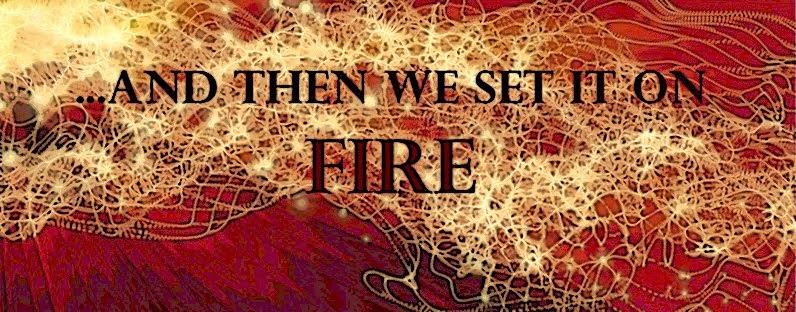I recently discovered a product that I've fallen in love with. FW Acrylic Inks. These little jars are like colorful love to my eyes. They are very vibrant and rich and fun to play with.
One of the first things I usually do when I add a new product to my studio is to create a color chart. Usually the color appears a little bit different on fabric or paper compared to just viewing it through the bottle it is stored in. This color chart is different from the charts I usually make. For this chart I wanted to show how the colors interact with each other when layered.
When layered, the inks mingle and blend and create more colors. Although some of these inks are opaque, I have found that when they are diluted with some water, they become a bit more transparent. I don't usually use the inks directly out of the bottle as I find them too deep and saturated for my needs. Instead I will mix the ink in a mixing cup with water. The amount of water I use depends on the look I desire. Usually I will dilute about 50%. Because I usually apply two layers of color to my fabrics, the 50% solution works well and I am still achieving very bright colors. You can see an example of two layers in the next photo.
This quilt started with one layer of FW ink color. I then added all the black detailing with both a Pentel Gel Roller for Fabric and FW Acrylic Ink in black. Then I painted on the second layer of background color with more FW inks. The flower and leaf interiors were not painted with a second layer and you can see how adding another layer heightens the vibrancy of the colors.
Recently I started experimenting with using the FW Acrylic inks in place of fiber reactive dyes when using resists.
In this first piece, I started with white cotton fabric and applied a water-soluble gel glue design. After the glue dried I painted on the inks and let it dry. I then added another layer of inks and let that dry. After heat setting with my iron, I soaked the piece in warm water until the gel glue was dissolved away. I was somewhat disappointed in that some of the ink color washed away and left the piece looking washed out. If that is the look you want, then this method/technique might be good for you. The washed out look is hard to see in the photo, but in real life it is very noticeable.
Another resist technique I like to use is with a water-based gutta. This gutta is designed for silk, but I like to use it on cotton. It is available in several colors, but my favorite is black. I applied the black gutta onto my white cotton fabric and let it dry. Then I applied two layers of FW inks letting them dry between layers. I don't remove this gutta when I use it so after ironing the piece I was ready to use it in my project. Here it is made into a wall quilt.
One more resist technique I've tried is a Shibori technique. This is a technique I recently learned from Brenda Gael Smith. With this resist, I started with a white piece of cotton fabric. I then marked circles onto the fabric and stitched a running stitch around the markings. The threads were then pulled tightly and knotted.
I then wet the knotted fabric piece and squeezed out as much excess water that I could. I applied two colors of ink randomly over the fabric and let it rest for a couple of hours. It was still very damp after this period of time and I then applied a couple more colors of ink. The amount of ink I applied was not excessive, in that the fabric piece was not sitting in pools of ink or liquid. I let the fabric dry. This can take a while since the fabric is knotted and gathered. I removed the knotted threads and after ironing, this lovely piece of fabric is my result. I love the way the colors are intermingling and creating such interesting patterns.
I think I am at the tip of the iceberg with my experiments and play with these inks, which is good because I've barely made a dent in the ink levels in my bottles. I know I will continue to explore further with them and see what they, and I, can do with them. They are very versatile and while there are other products that can simulate what these do, I think the vibrancy factor of this product is what will be the deciding factor when I am planning a project.
Thank you for inviting me to be a guest here on your blog. I look forward to watching your continued experiments and results with all that you do.
Terri Stegmiller
Edited: You can find the Shibori technique tutorial mentioned above and many other techniques and projects at 3 Creative Studios. Look on the Free Projects page here.
Edited: You can find the Shibori technique tutorial mentioned above and many other techniques and projects at 3 Creative Studios. Look on the Free Projects page here.




















































